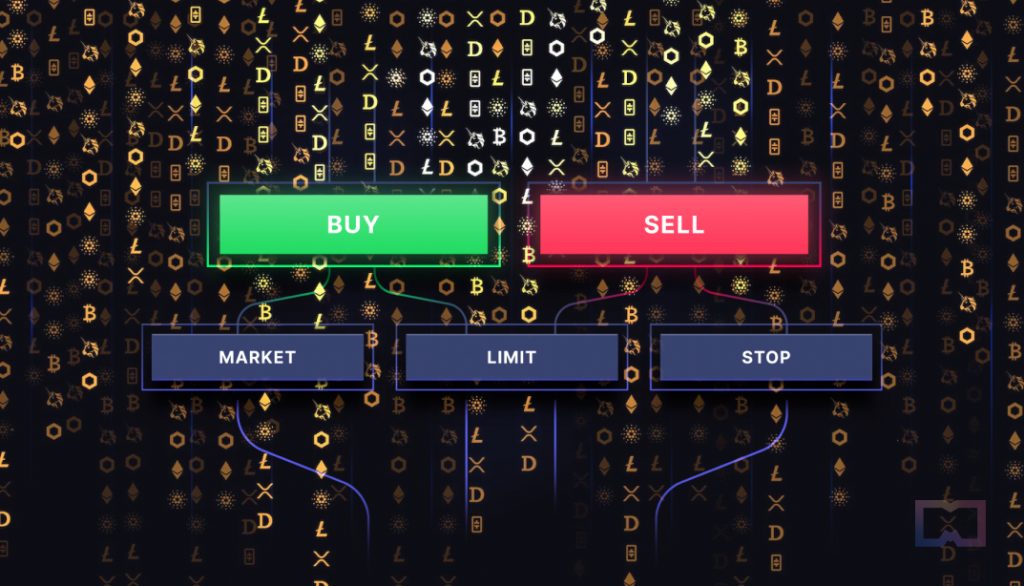Understanding Crypto Trading: A Guide to Cryptocurrency Order Types for 2023
In Brief
In the realm of cryptocurrency trading, order types play a critical role in establishing the terms for executing trades.
Among the most prevalent types of orders in crypto trading are limit orders, market orders, and stop-limit orders.
Introduction
If you're just beginning your cryptocurrency trading journey, the variety of order types can seem daunting. To assist you in getting started, we’ve put together a straightforward list of the primary order types, each with a concise explanation.

Market Order
A market order represents one of the simplest and most commonly utilized order types. When you place a market order, you’re asking your broker to execute a trade for an asset at the highest available price in the current market. For instance, if you wish to purchase 1 BTC at the current market rate, you would submit a market buy order, and your broker would fulfill it at the optimal price. In this scenario, that optimal price corresponds to the current market valuation of BTC.
Market orders are typically favored by investors aiming for quick transactions and who are willing to accept a slightly higher price for the sake of speed and convenience.
Pros:
- Simple to execute.
- Perfect for quickly acquiring or liquidating cryptocurrencies.
Cons:
- When buying, you may end up paying a premium due to market conditions at the execution moment, or conversely, you might receive a lower price if you're selling.
Limit Order
A limit order allows traders to buy or sell an asset at a defined price. Unlike a market order, a limit order won’t trigger immediately but will stay open until the set price is reached. For example, if you’re aiming to buy 1 BTC at $10,000, you’d place a limit buy order, which will stay active until BTC's price hits that mark. Once BTC reaches $10,000, your order will be executed, and you'll successfully own 1 BTC.
Investors often opt for limit orders when they wish to trade at a specific price point. They can also serve as a safeguard against losses in bear markets.
Pros:
- You gain the advantage of determining the precise price at which you'd like to buy or sell a cryptocurrency.
- Perfect for traders who want to execute at a target price.
Cons:
- However, there's a risk that your order might not get filled if the market conditions aren’t conducive.
- It’s possible that you may have to wait quite some time for your order to be executed.
Stop-Loss Order
A stop-loss order triggers a buy or sell action once an asset reaches a predetermined price. Unlike limit orders, these orders activate only after the stated price is hit, ensuring a trade is made at the best available result once the stop price is achieved.
For example, if you want to acquire 1 BTC as soon as it hits $10,000, you would set a stop-loss buy order for that price. Once BTC reaches $10,000, your order activates and executes at the best price available.
Stop-loss orders are often employed by investors keen on capping their losses should the market decline.
Pros:
- You gain the advantage of determining the precise price at which you'd like to buy or sell a cryptocurrency.
- Perfect for traders who want to execute at a target price.
Cons:
- However, there's a risk that your order might not get filled if the market conditions aren’t conducive.
- It’s possible that you may have to wait quite some time for your order to be executed.
Take-Profit Order
On the flip side, a take-profit order is designed to execute once an asset hits a specific price. Similar to the limit order, a take-profit order is dormant until the target price is attained, and then it will execute at the best available price.
For instance, if you want to buy 1 BTC as it reaches the $10,000 threshold, placing a take-profit buy order would be your strategy. Once BTC crosses that threshold, your order activates to execute at the optimal price available.
Investors often use take-profit orders to secure gains in a bullish market.
Pros:
- This allows for targeted profit-taking while stepping away from your screen as the trade processes itself.
- Combining this with a stop-loss can help you manage potential losses.
Cons:
- However, there's also the chance you'll miss out on further profits if the price keeps climbing after hitting your target.
- Not available on all exchanges.
Steps to Create Your Cryptocurrency Exchange Account
The initial step in your crypto trading journey involves registering on a cryptocurrency exchange. With numerous exchanges available, it’s crucial to pick a trustworthy one that fits your specific needs.
Upon selecting an exchange, you'll need to create an account, which usually requires providing some personal details, such as your name and email. Additionally, setting up a secure password is essential. You'll also go through the identity verification process, which typically entails submitting an ID like a passport or driver's license. Once verified, you'll be set to deposit funds and start trading.
Steps to make an order
To commence trading cryptocurrencies, it's important to first create your account on a cryptocurrency exchange. After that, you'll gain access to the trading platform of that exchange and can initiate your first trade.
Making a trade on a cryptocurrency exchange is quite straightforward. Start by selecting the cryptocurrency pair you wish to trade. For instance, if you're looking to swap Bitcoin for Ethereum, you would pick the BTC/ETH pair.
After selecting your desired trading pair, you’ll need to determine the type of order you want to execute.
Fundamental Analysis Versus Technical Analysis
What’s the difference?
In analyzing cryptocurrency markets, traders primarily adopt two main methods: fundamental analysis and technical analysis. Fundamental analysis assesses an asset by exploring its economic, financial, and political landscape. On the other hand, technical analysis delves into price charts and trends to pinpoint potential trading openings.
So, which approach is better?
Well, which method you choose really comes down to your trading intentions. If your aim is long-term investment in a cryptocurrency, fundamental analysis might be your focus. However, if you’re more inclined towards short-term trading for quick profits, technical analysis could prove more beneficial.
Of course, blending both approaches isn’t off the table. Many savvy traders incorporate elements of both fundamental and technical analysis when making their decisions.
Ultimately, the takeaway is that there’s no absolute right or wrong way to evaluate the cryptocurrency landscape. It’s all about discovering what resonates with your unique trading philosophy.
FAQs
Most exchanges require account creation prior to order placement. Once that’s done, you'll typically need to deposit fiat currency (like USD) or cryptocurrency to kick off your trading.
Upon funding your account, you can navigate through the exchange's selection of trading pairs (like BTC/ETH) and place an order using their order interface. Depending on the exchange features, you might have the option to place a limit order, market order, or stop-limit order.
A limit order is specified to buy or sell a cryptocurrency at a targeted price or better. A buy-limit order executes solely at the set price or lower, while a sell-limit order will execute exclusively at the set price or higher.
Traders frequently employ limit orders to ensure they receive the most advantageous price for their transactions.
A market order is an instruction to buy or sell a cryptocurrency at whatever price is currently available. Market orders are usually preferred by traders who seek to fulfill their transactions promptly without concern for price fluctuations.
A stop-limit order is a directive to buy or sell a cryptocurrency at a designated price or better once a certain price has been met. Traders often utilize stop-limit orders to cap losses on a particular trade.
If you decide to cancel an existing order on an exchange, you'll need to access the order book associated with the relevant trading pair and cancel your order there. The cancellation process is generally user-friendly, though it may differ based on the exchange in use.
If your order is a limit order, be aware that it might not execute instantaneously if the current price of the cryptocurrency doesn’t align with your specified price. In that case, the order will linger in the order book until the cryptocurrency’s price meets your set criteria or until you decide to cancel it.
Trading fees for cryptocurrencies can differ significantly across exchanges. Some may enforce a standard fee for all trades, while others implement varying fees depending on the order type. It's wise to review the respective fees of an exchange prior to placing any orders.
In trading cryptocurrencies, risks such as loss, theft, and fraud are prevalent. Therefore, always prioritize protective measures to minimize exposure to these risks. For instance, safeguarding your private keys and engaging only with well-regarded exchanges can bolster your security.
The potential rewards of trading cryptocurrencies include lucrative profit opportunities, diversification of your investment portfolio, and engaging with a novel and exhilarating market.
Cryptocurrency arbitrage involves taking advantage of price discrepancies for the same digital currency across various exchanges. Essentially, it’s a trading strategy where investors purchase cryptocurrencies on one platform and sell them on another to make a profit. For instance, if one exchange lists Bitcoin at $10,000 and another at $9,500, savvy traders can scoop up Bitcoin on the lower-priced exchange and promptly sell it on the higher-priced one, pocketing a neat gain of $500.
Margin trading opens up the possibility for traders to leverage their positions by using more capital than they actually have available. In this setup, one borrows funds from an exchange or broker, allowing them to amplify their trade potential. This method, while offering the tantalizing chance for increased profits, also poses significant risks, as it can just as easily magnify losses. When executed with caution and strategy, margin trading can lead to lucrative trades within the cryptocurrency market.
Short selling is a strategy designed for capitalizing on declining prices. This process involves borrowing a cryptocurrency from a broker or exchange, selling it at the current market price, and then anticipating a drop in value so that the trader can repurchase it at a lower price. Following this, the borrowed coins are returned to the lender, allowing the trader to profit from the difference in sale and repurchase price.
A stop-loss order is a protective measure that traders use to mitigate losses. It’s an instruction set to automatically sell a cryptocurrency once it hits a predetermined price. For instance, if you purchased Bitcoin at $10,000 and established a stop-loss at $9,500, your order will trigger if the market falls to that level, ensuring you limit your losses to $500.
Conclusion
To sum it up, grasping various order types is crucial for navigating the realm of cryptocurrency trading successfully. Market orders are straightforward and automatically executed, while limit and stop-limit orders empower traders to pinpoint specific price targets for their transactions. Understanding which order type fits each trading scenario equips traders to optimize their strategies and work towards their financial aspirations.
Related articles
- Curious about Bitcoin Cash and its operational mechanics? Here’s a beginner-friendly guide to get you acquainted with BCH.
- Altcoin Trading 101: An all-inclusive guide on navigating the purchase and sale of alternative cryptocurrencies.
- Bitcoin advocate Anthony Pompliano is expressing waning faith in cryptocurrencies as the market continues to experience a downturn.
Disclaimer
In line with the Trust Project guidelines It's vital to clarify that the content provided here should not be viewed as legal, tax, investment, financial advice, or any form of guidance. Always invest only what you can afford to lose and seek independent financial counsel if needed. For detailed terms and support, please consult the accompanying pages from the issuer or advertiser. MetaversePost aims for accuracy and neutrality in its reporting; however, please be aware that market conditions can shift unpredictably.







